Scotland May 12-13, 1975: Siccar Point and St. Andrews
Steven Dutch, Professor Emeritus, Natural and Applied Sciences, Universityof Wisconsin - Green Bay
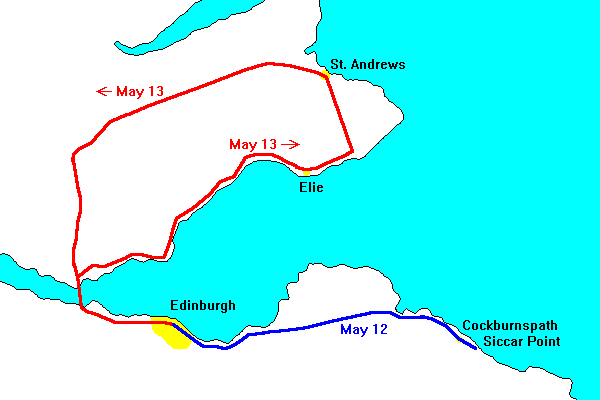
12 May 1975: Siccar Point
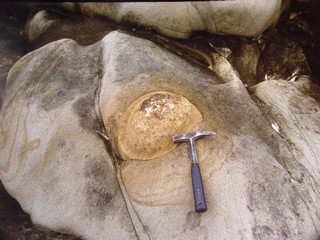 |
Carboniferous sandstone at Pease Bay with spheroidal calcareous concretion. |
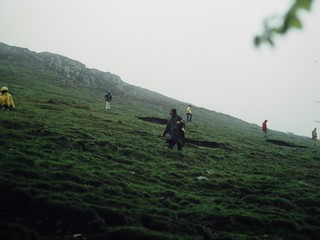 |
Now this is how you picture Scotland. Actually, apart from a bit
of bad weather at the start of the trip, we had good weather almost
the entire time.
However, this steep, wet, grassy slope was treacherous, and it was here that one guy gained eternal renown for the "Siccar Point Slide." I heard a muffled squawk behind me, followed by a "thump thump thump," and stepped aside just in time to see him go past, flat on his back on his poncho. |
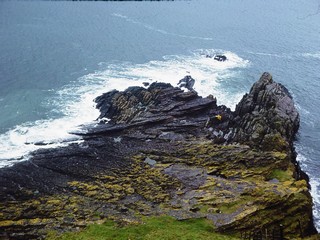 |
He pirouetted gracefully downhill head over heels, flat on his back, and was stopped by a couple of other people just before he had a chance to add to the stratigraphic record at Siccar Point. |
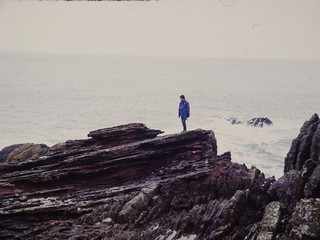 |
James Hutton was interested in how the gently-deformed rocks around Edinburgh related to the intensely deformed rocks further south. So he and some companions rented a boat and sailed along the coast until the found this locality, which is now known as Hutton's Unconformity. Devonian rocks lie at almost a right angle on top of tilted Ordovician-Silurian rocks. |
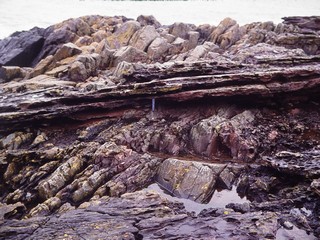 |
To produce this unconformity, the older rocks had to have been deposited,
tilted, eroded, buried, then tilted and eroded again. Hutton was awed
at the complexity of the geologic record revealed here.
Below: closeups of the unconformity and Devonian basal conclomerate. |
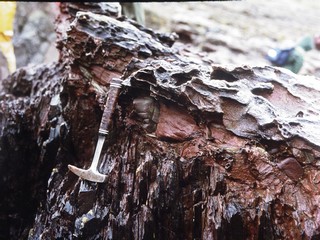
|
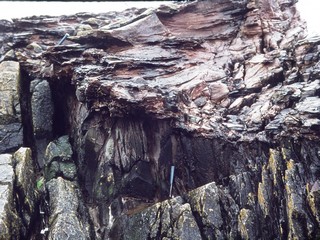
|
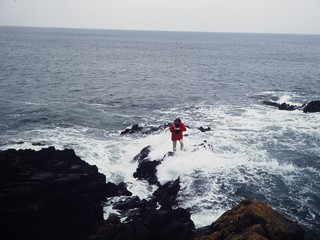 |
Some people will do anything to get a group photo. |
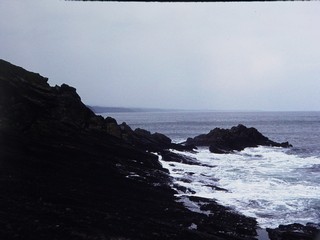 |
View northwest along the coast. Among other things, we saw a seal swim by. |
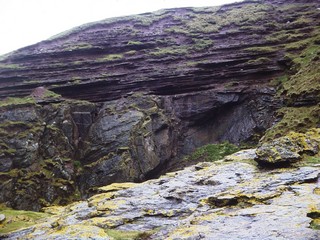
|
|
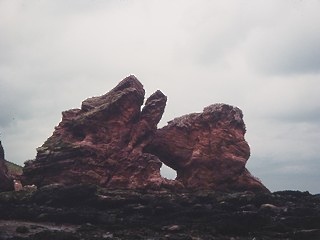
|
Sea stacks of Devonian sandstone. |
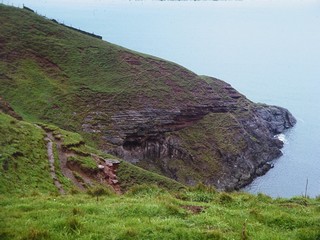
|
East side of Siccar Point. Subhorizontal Devonian rocks are exposed at the top of the cliff and the hillside, and the deformed lower Paleozoic rocks are along the shore. |
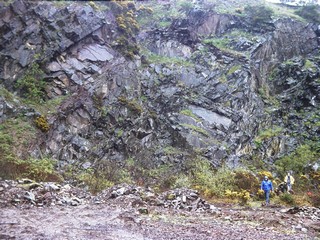
|
13 May 1975: Elie and St. Andrews
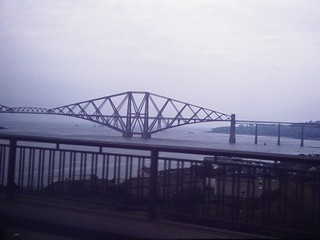
|
The great Forth railroad bridge was a pioneering venture in using iron for large bridge spans. |
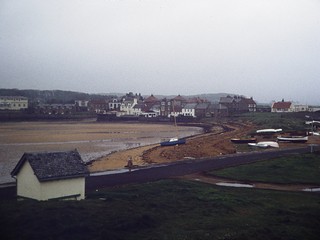
|
Left and below: Elie, site of a number of volcanic vents with ultramafic and high-pressure inclusions. |
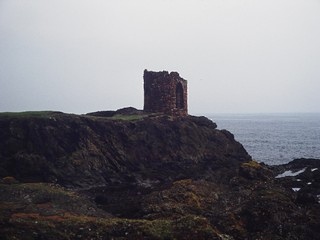
|
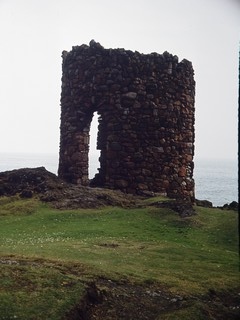
|
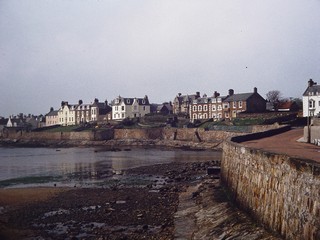
|
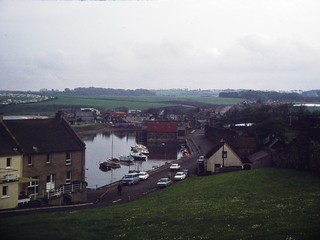
|
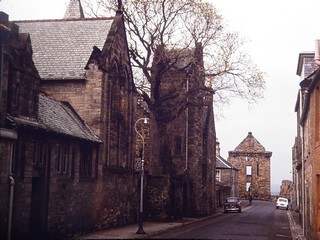
|
St. Andrew's is a site of pilgrimage to golfers because it's the home of the very first golf course. It also has some impressive ruins. |
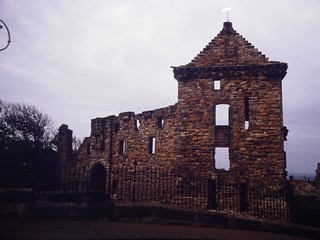
|
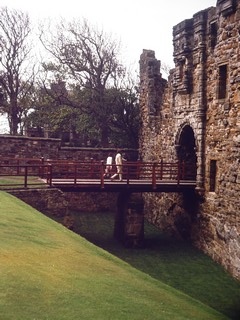
|
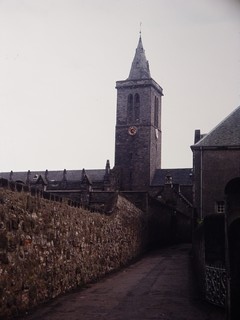
|
Below: For trip participant Roy Kligfield, anything climbable was irresistible. |
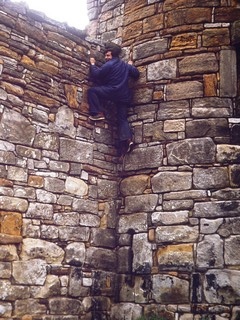
|
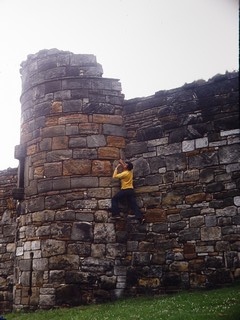
|
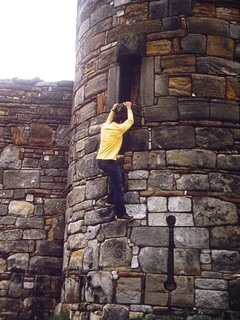
|
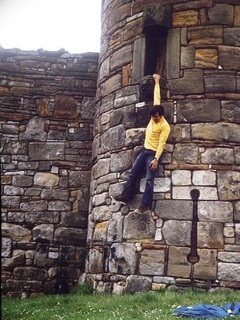 |
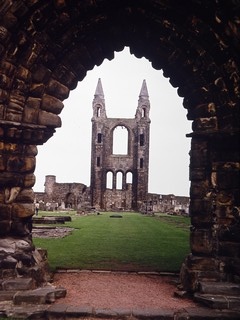
|
Left and below: ruins of the great cathedral of St. Andrew's, destroyed during the "Reformation." |
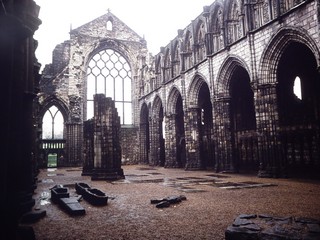
|
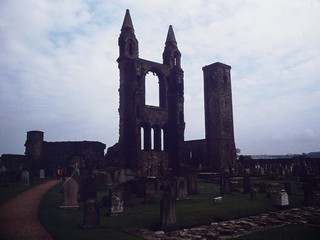
|
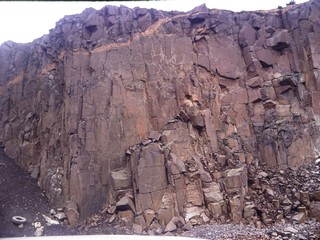 |
Upper Carboniferous Sill near the Forth Bridge. At upper center is a cobweb-like texture presumably caused by "filter pressing." The rock is solid enough to fracture, after which residual liquid between grains fills the fractures. |
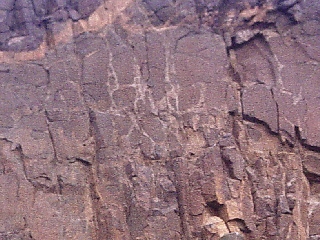 |
Close-up of the filter-pressed texture. Picture area is about two meters across. |
Return to Historic Sites Index
Return to Virtual FieldTrips Index
Return to Professor Dutch's Home Page
Created 7 April 2003, Last Update 09 June 2020